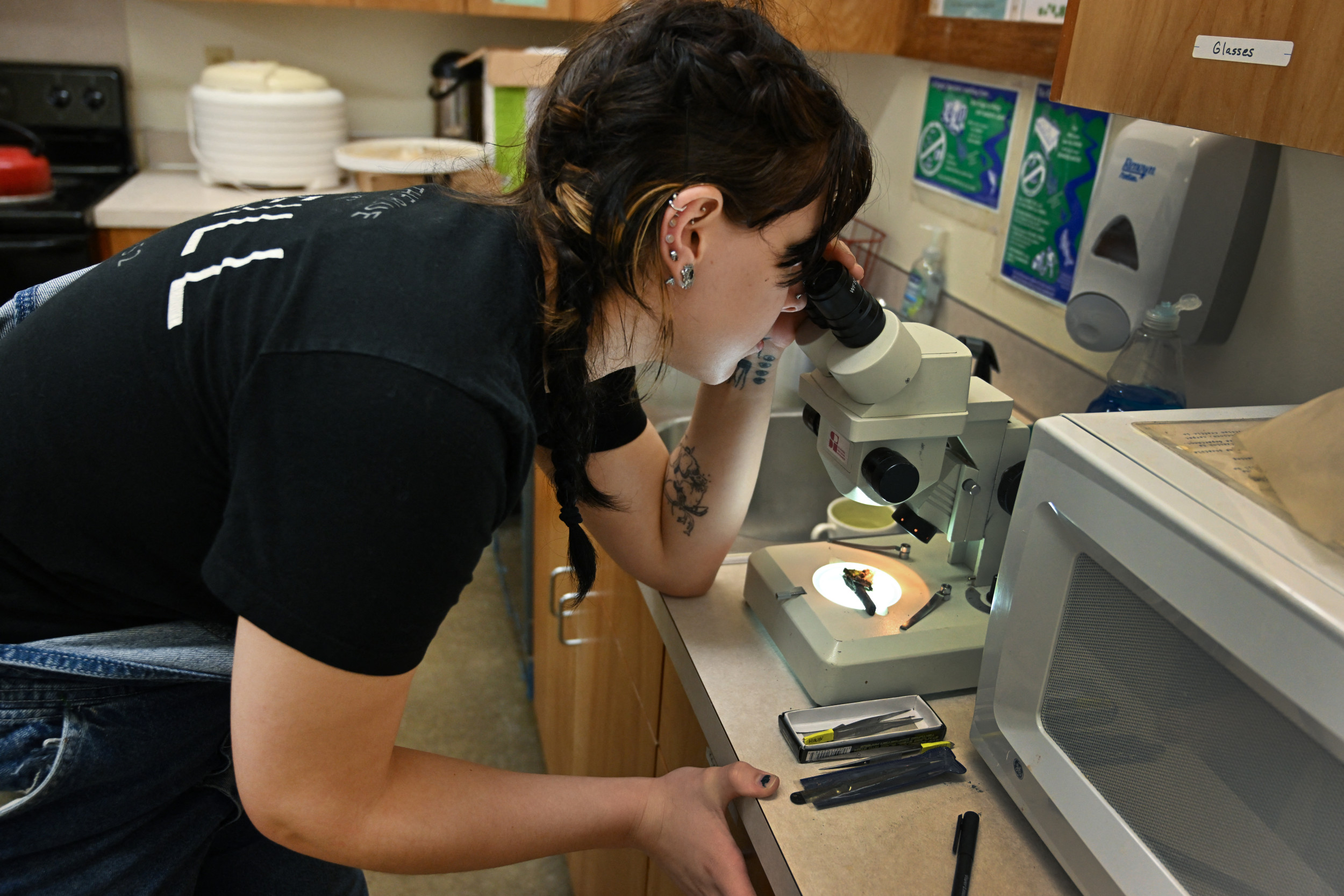
As global temperatures continue to rise, scientists are sounding the alarm about an emerging threat: the rapid spread of potentially deadly Aspergillus fungi.
With the climate crisis driving warmer and more humid conditions, certain fungal diseases, once confined to tropical regions, are making their way into temperate zones across Europe, posing significant health risks to humans and wildlife.
Why It Matters
According to a recent study co-authored by Norman van Rhijn, published on Research Square, the changing climate provides the perfect environment for fungi such as Aspergillus to spread.
The study states that Aspergillus species cause severe infections in humans, livestock, and plants and are widespread environmental saprotrophs.
Saprotrophs are organisms that feed on nonliving organic matter at a microscopic level. They are “critical to decomposition and nutrient cycling and include fungi, certain bacteria, and funguslike organisms,” according to Britannica.
Robyn Beck AFP via Getty/Getty Images
What To Know
The study states that the filamentous fungal Aspergillus species are “the perfect example of a cross-kingdom pathogen. They are capable of infecting humans, other mammals, birds, honeybees, and corals, they spoil crops pre- and post-harvest, and they render crops unsafe for consumption by production of mycotoxins.”
Aspergillus can cause serious infections like aspergillosis. This fungal infection primarily affects individuals with weakened immune systems, such as those with asthma or undergoing chemotherapy. Aspergillosis can be deadly, often going undiagnosed due to its subtle symptoms and the lack of awareness among medical professionals.
Fungi remain poorly understood, with over 90 percent of species still unidentified, the Financial Times reported. Each year, invasive fungal infections contribute to around 3.8 million deaths.
Among the most dangerous fungi is Aspergillus fumigatus, which thrives at body temperature, making it especially lethal. Climate change is expected to expand its range by 77 percent by 2100, increasing the number of people exposed to infection in northern Europe, Asia, and the Americas.
Another significant species, Aspergillus flavus, affects crops and produces aflatoxins, which can cause liver damage and cancer. Rising temperatures and increased CO₂ levels may boost the growth of A. flavus, worsening food security and public health concerns. The fungus has been responsible for outbreaks in several countries and is becoming resistant to fungicides, making it harder to control.
What People Are Saying
Exeter University Professor and British Mycological Society President Elaine Bignell told Newsweek in a statement: “Like the vast majority of deadly fungal pathogens, Aspergillus species live in the natural environment and we are exposed to them daily. Aspergillus fumigatus is the most common cause of human disease, mostly infecting the lung following inhalation of airborne fungal spores.
“We do not know for sure why this particular species is isolated most frequently from infected patients, but compared to Aspergillus niger and Aspergillus flavus, A. fumigatus grows astonishingly quickly at high temperature – so its lifestyle in the natural environment (very often in compost that can reach high temperatures) may have provided Aspergillus fumigatus with the fitness advantage needed to colonise human lungs.
“As well as causing deep seated life-threatening lung disease, A. fumigatus also causes a high burden of debilitating lung disease in asthmatic patients who are sensitised to fungal spores. Concerningly, azoles, the relevant frontline class of antifungal drug, are losing utility due to their use in agriculture that is driving the fungus to adapt to environmental drug exposure making Aspergillus-related disease less treatable.
“Drugs and heat are not the only environmental stressors that will lower the barrier to causing infections in humans, adaptation to the increasing salinization of our environment via rising sea levels, human activity (mining, farming road salting) are all continual pressures that may deliver an uplift to fungi attempting to grow in human tissues. Finally, major weather events provoked by global warming will displace fungi that ordinarily live in more remote and/or inaccessible environments as well as mobilise their spores into the airborne microflora.
“With less than a handful of antifungal drugs available to tackle these diseases, we are ill-prepared to tackle emerging fungal threats and this, as well as vaccine development, must be considered an area of unmet urgent need.”
What Happens Next
Extreme weather events, such as droughts followed by heavy rainfall, are expected to increase fungal infections. These conditions disturb the soil, releasing spores into the air, which can lead to outbreaks such as aspergillosis.
Marginalized populations, particularly those in rural areas, face heightened risks from fungal infections. Additionally, individuals recovering from severe illnesses like COVID-19 may be more susceptible due to weakened immune systems and strained health care systems.
